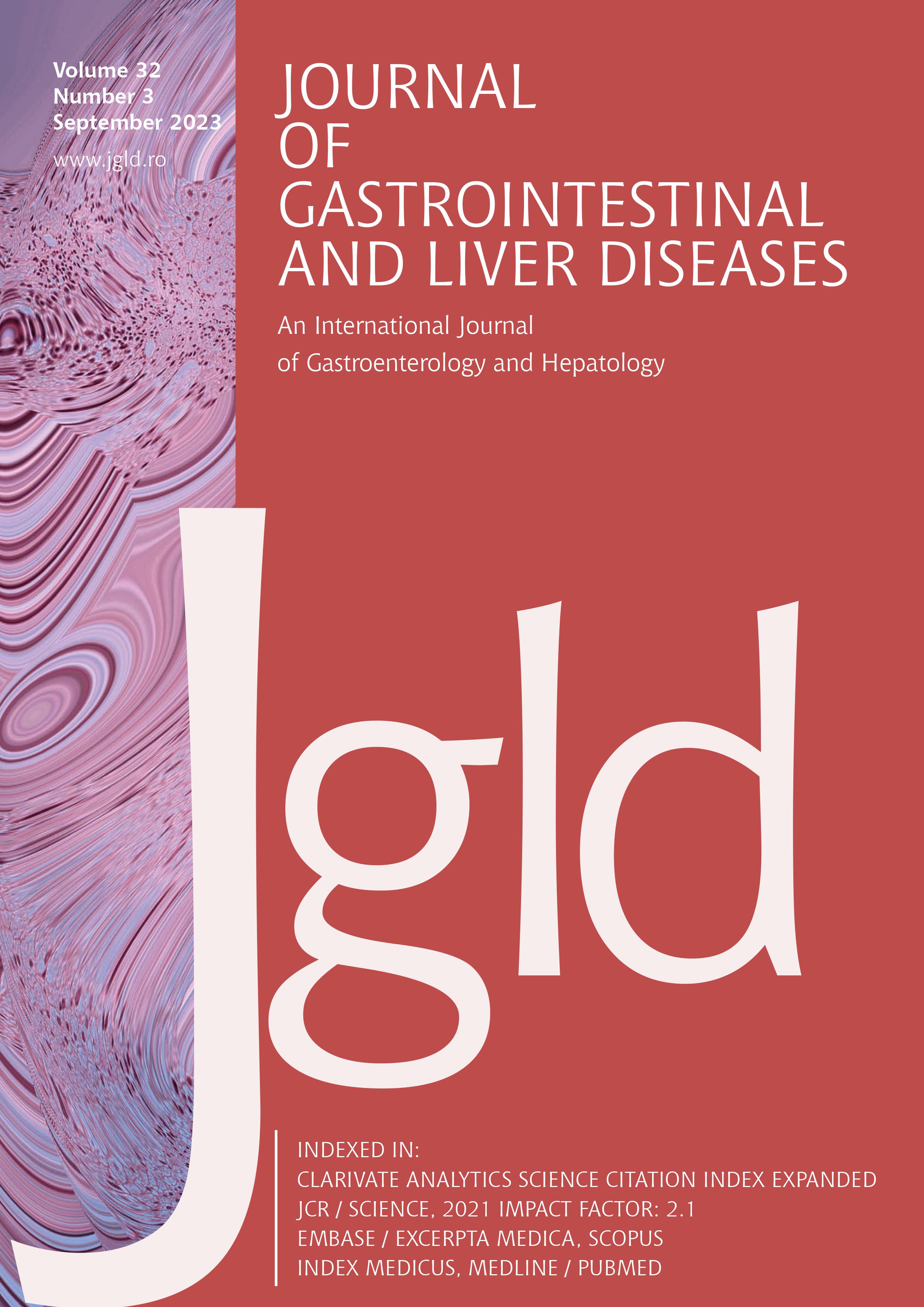Piecemeal Resection for Large Colorectal Adenomas Remains Essential in 2022: A Single-Center Experience in a Tertiary French Center
DOI:
https://doi.org/10.15403/jgld-4719Keywords:
large laterally spreading colorectal adenomas, knife-assisted piecemeal resection, colorectal piecemeal EMR, colorectal ESDAbstract
Background and Aims: Colorectal lesions measuring greater than 20 mm are unsuitable for en bloc endoscopic mucosal resection (EMR): piecemeal EMR (PM-EMR) and endoscopic submucosal dissection (ESD) are needed. The European Society of Gastrointestinal Endoscopy (ESGE) recommends ESD only for microinfiltrative lesions, although Japanese teams perform en bloc ESD for all lesions. We report the outcomes obtained in our endoscopy unit for these lesions and assess the hybrid “knife-assisted piecemeal EMR” (KAPM-EMR) technique. The main aim was to assess the short-term outcomes (C1). The secondary objectives were to evaluate the long-term results (C2), adverse event rate and management of recurrence.
Methods: We retrospectively analyzed data from patients treated by PM-EMR, KAPM-EMR and ESD for a colorectal lesion measuring greater than 20 millimeters using prospective inclusion over four years.
Results: Data from 167 patients (median age: 70) with a median follow-up of 15.1 months were analyzed after excluding 95 patients. A total of 131 lesions were removed by PM-EMR, 24 by KAPM-EMR and 12 by ESD; 146/167 (87.4%) patients were considered in remission at C1. Recurrence was treated by endoscopy in 20/21 patients (95%); 86/89 (96.6%) were in remission at C2. A total of 16/167 patients developed adverse events, all of whom except one were endoscopically managed. KAPM-EMR was associated with a higher perforation risk (p=0.037). No differences in postoperative bleeding were found among the three groups (p=0.576).
Conclusions: Piecemeal resection remains an effective and safe technique for large colorectal adenomas. KAPM-EMR may be useful but should be applied with caution due to the risk of perforation.


